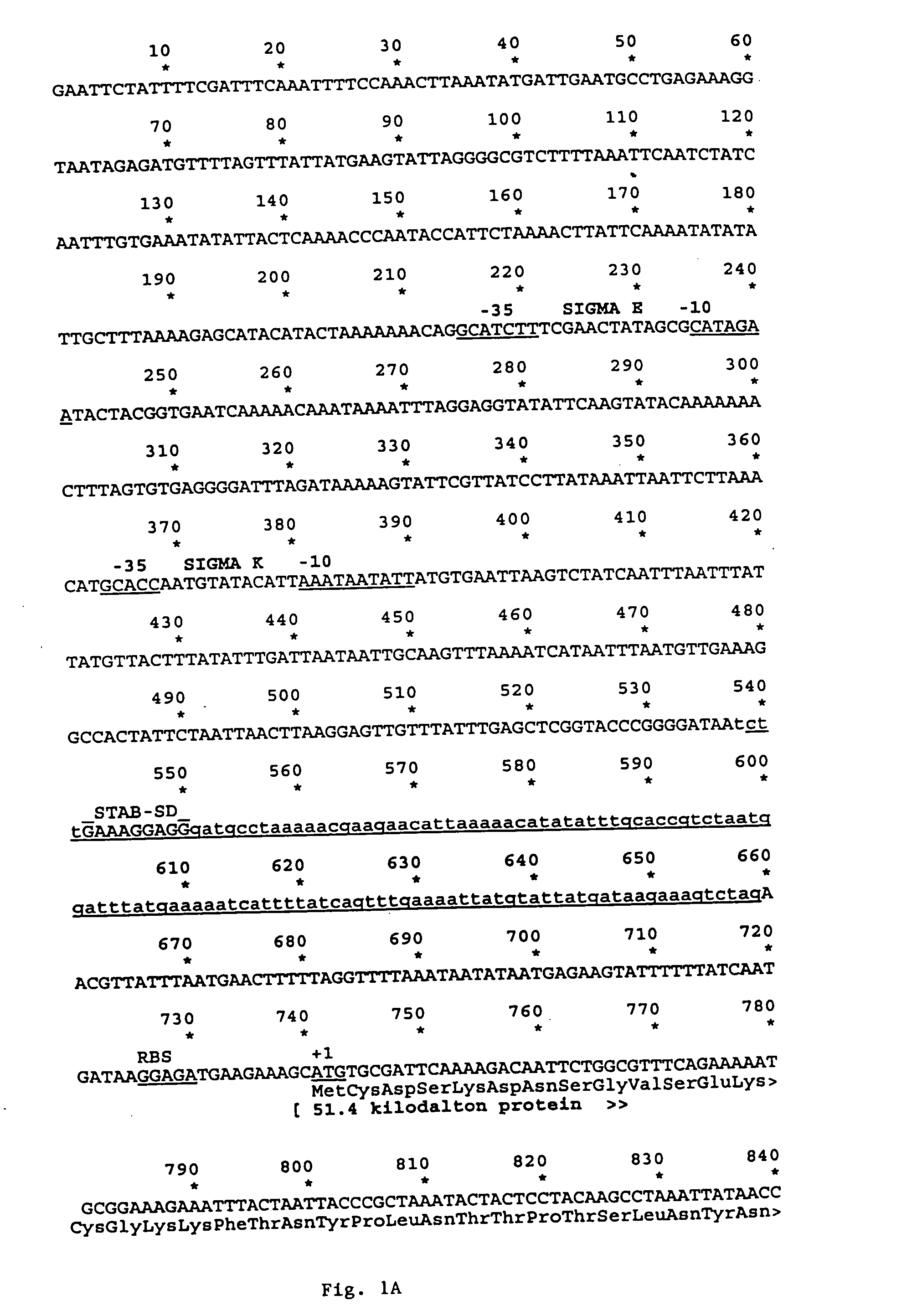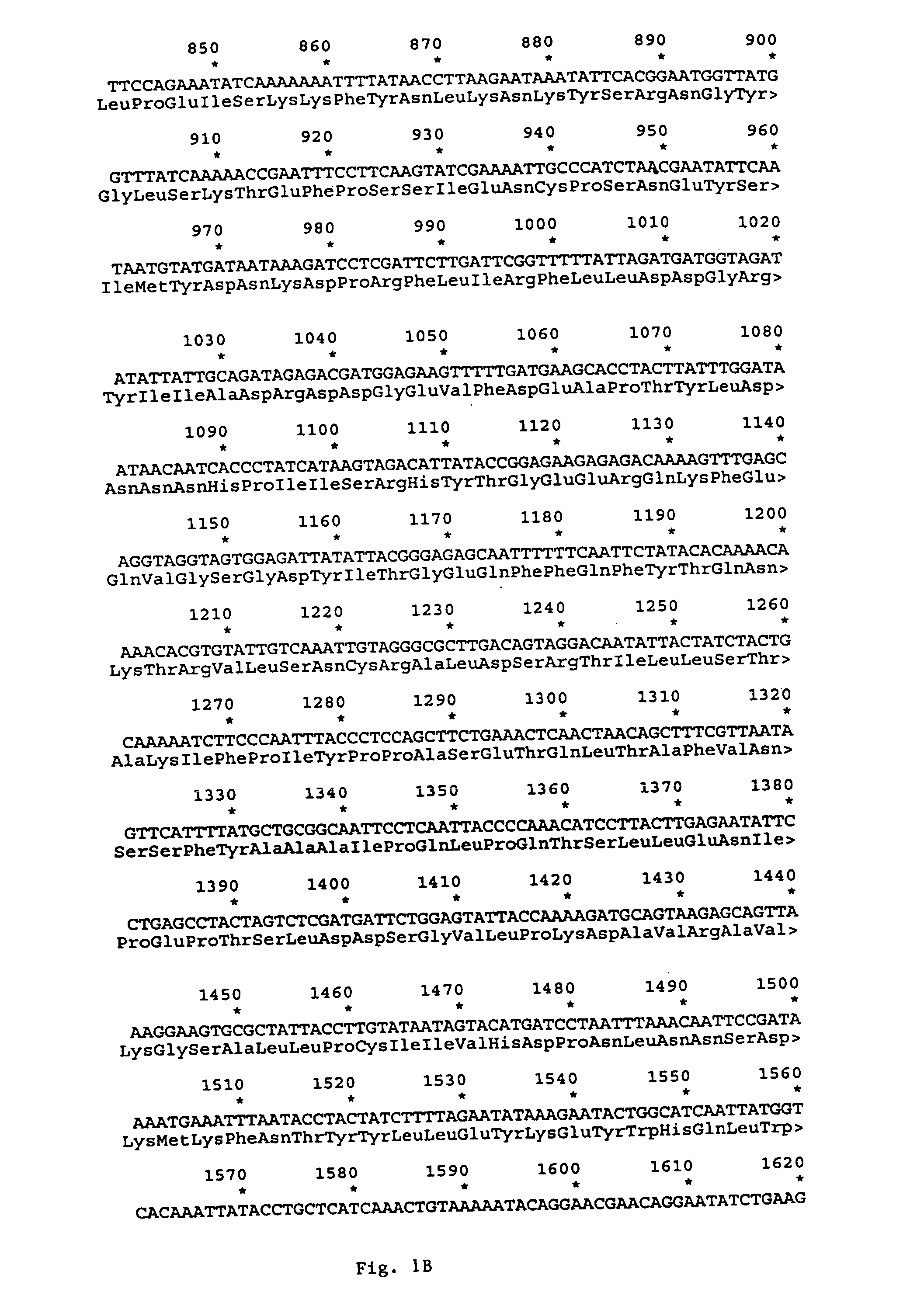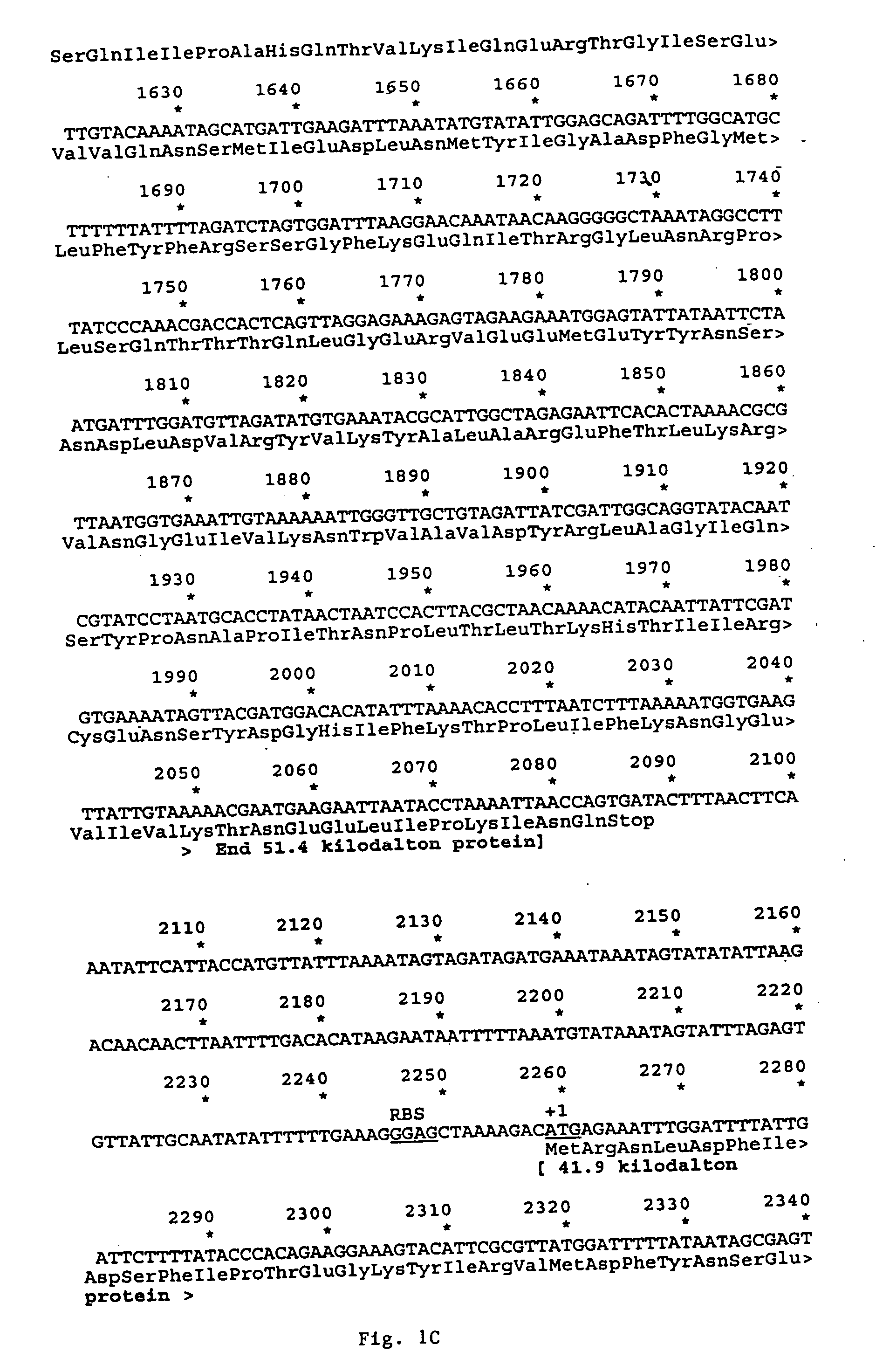Insecticidal bacteria, and methods for making and using them
- Summary
- Abstract
- Description
- Claims
- Application Information
AI Technical Summary
Benefits of technology
Problems solved by technology
Method used
Image
Examples
example 1
Expression Levels of Bs Binary Toxin Produced in Bti Using a Bti Promoter, STAB-SD Sequence, and Coding Sequence for the Toxin
[0104] A Bacillus sphaericus 2362 binary toxin gene was introduced into an acrystalliferous strain (4Q7) of Bacillus thuringiensis subsp. israelensis (Bti) using cyt1A promoters and a STAB-SD sequence placed into the plasmid pHT3101. The construct resulted in binary toxin production which appears to be 15-fold or more greater per unit of culture medium than that obtained with the parental (wild type) B. sphaericus strain grown on the same medium, as assessed by densiometric scanning of gels produced by sodium dodecyl sulfate-polyacrylamide gel electrophoresis (SDS-PAGE).
TABLE 1Yield Increases Obtained Using cyt1A Promoters andthe STAB-SD Sequence to Drive Expression of theBs 2362 Binary Toxin Gene OperonIncrease inDecrease in BtiStrainBinary ToxinToxinsBs 2362 (wild type) 1—Bti IPS82 (Wild type)—1Bti4Q7 / Bs Binary toxin>15×Bti IPS82 + Bs Binary toxin>20×....
example 2
Toxicity of Non-Toxic Bti Engineered to Express Bs Binary Toxin
[0105] The toxicity of the acrystalliferous 4Q7 Bti strain, transformed to produce Bs 2362 binary toxin, was tested on fourth instar larvae (“L4”) of Culex quinquefasciatus and compared to the wild type Bs 2362 strain grown on the same medium. (Bti strain 4Q7 does not normally produce Bs or Bti toxins.) LC50 is the amount of toxin required to kill 50% of the larvae present in a sample during a test.
[0106] As shown on Table 2, below, the amount of wild-type Bs2362 needed to kill 50% (“LC50”) of fourth instar larvae of Culex mosquitoes was 15.0 ng / ml. The 4Q7 Bti strain, transformed by nucleic acids of the invention to express Bs toxin, had an LC50 of 1.4, or approximately 10 times better toxicity than that of unaltered Bs.
example 3
Toxicity of Bti Engineered to Express Bs Binary Toxin
[0107] Transformation of Bacillus thuringiensis subsp. israelensis with the plasmid described in Example 1 that produces the Bs2362 binary toxin increased toxicity by at least 10-fold against Culex species compared to either of the parental strains (Bs or Bti).
[0108] Bti IPS82 is the strain of Bti used as a commercial biopesticide. As can be seen from Table 2, the amount of this strain needed to kill 50% (“LC50”) of fourth instar lavae (“L4”) of Culex mosquitoes was 19.5 ng / ml. Wild-type Bs strain 2362 had an LC50 of 15 ng / ml. The Bti IPS82 strain, transformed by nucleic acids of the invention to express Bs toxin, had an LC50 of 1.5, or approximately 13 times better toxicity than that of unaltered Bs.
TABLE 2Toxicity of a Bti / Bs2362 Recombinant to L4RatioRatioBtiBsStrainLC50 (ng / ml)Bti / BsBti / BsBti IPS8219.5.1.0—Bs 236215.0— 1.0Bti4Q7 / Bs Binary toxin1.4—10.0Bti IPS82 + Bs Binary toxin1.513.0—
PUM
| Property | Measurement | Unit |
|---|---|---|
| Linear density | aaaaa | aaaaa |
| Linear density | aaaaa | aaaaa |
| Linear density | aaaaa | aaaaa |
Abstract
Description
Claims
Application Information
 Login to View More
Login to View More - R&D
- Intellectual Property
- Life Sciences
- Materials
- Tech Scout
- Unparalleled Data Quality
- Higher Quality Content
- 60% Fewer Hallucinations
Browse by: Latest US Patents, China's latest patents, Technical Efficacy Thesaurus, Application Domain, Technology Topic, Popular Technical Reports.
© 2025 PatSnap. All rights reserved.Legal|Privacy policy|Modern Slavery Act Transparency Statement|Sitemap|About US| Contact US: help@patsnap.com



